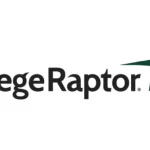In two previous blog posts, we discussed the transformative potential of Human-Centered Artificial Intelligence (HCAI) and its capability to hyper-personalize content and interactions to promote student success. Despite the best efforts of higher education to understand and support students more holistically, as detailed in the latter article, there remains much to be desired. To fully harness the benefits of hyper-personalization, institutions must acknowledge and leverage the diverse identities of students as assets.
As enrollment and student outcomes remain under the microscope in the media, politics, and within our institutions, college and university leaders face immense pressure to scrutinize their own data to identify and address barriers to student success. However, the approach to addressing these barriers upon discovery is critical.
Where We’ve Fallen Short in the Past
Using data on student academic performance as an example, the term “academic achievement gaps” arose from observed disparities in academic performance data between student groups across different demographic variables like race and gender. A problem with a term like “achievement gap” (especially in how it was used) is that it suggested a deficiency among students in the lower-performing group. This implies that the solution entails augmenting the students’ existing skills and identities somehow to help them succeed in the institution.
We now understand that higher education institutions were not designed for the diverse array of students they currently serve, pointing to a more likely scenario where the gaps result from the institutions’ inability to effectively support, retain, and graduate the students they enroll.
How We Can Adapt Our Approach for the Future
Our industry has come a long way since the introduction of terms like the “achievement gap”. We are working on redirecting the spotlight away from students’ perceived “deficits” and onto institutional barriers (e.g., higher education jargon, complex academic standing policies, and confusing placement procedures) that make success more challenging for students, depending on their identities.
In addition to removing institutional barriers to success, we can also reframe students’ diverse identities as assets, not deficits. Research shows that supporting students through asset-based practices can boost a host of important student metrics, including belonging, engagement, and success.
Despite our best efforts to move away from deficit-based language, we still fall into the trap of oversimplifying our students. To make sense of our complex students, and the data that describes them, we still over-rely on monolithic views of our students, oversimplifying our incredibly multifaceted students into categories like ‘underrepresented,’ ‘minority,’ or ‘non-white.’ Fortunately, HCAI offers a new avenue for personalizing our interactions with students, allowing us to truly recognize their unique, intersectional identities.
How Human-Centered AI Can Help
Given this context, we can imagine a very different future for our students. One where, enabled by HCAI, each interaction is highly personal and intentional, not just in terms of the information they receive, but also in terms of the way we support them. HCAI-enabled support can:
- Affirm students’ identities through culturally-responsive communication.
- Proactively and regularly check in with students, using a mix of HCAI and human interactions, tailored to what we know about each student as an individual.
- Convey to students that they are valued because of their unique identities, not in spite of them.
- Treat each student as an individual, utilizing technology to personalize rather than generalize.
Incorporating HCAI into your campus’ practices has transformative potential, but it still requires care and caution, which is exactly what makes the human part of HCAI so critical. Human expertise, relationship-building, cultural and interpersonal awareness, and context will always add an important layer to any AI based interaction. Likewise, faculty and staff must be able to mirror the same level of personalized interactions and culturally responsive tone of their AI counterparts. HCAI can only reach its full potential when both the human-centered and AI aspects work in harmony.
To create transformative student experiences, hyper-personalization must be identity-aware. HCAI presents an opportunity for institutions to adopt an asset-based approach that celebrates student diversity. By uniting the power of AI and human support through HCAI, colleges can increase a sense of belonging and success for all students.















